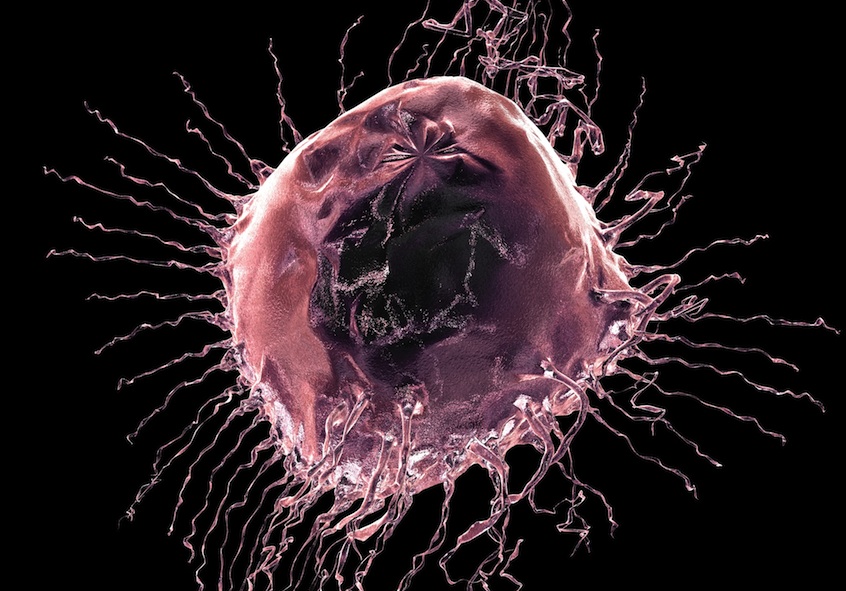Scientists Studying Aggressive Cancer Cells

The aggressiveness of cancer cells, like the one above, may be affected by the ZEB1 gene. Cancer cell illustration via Shutterstock.
Scientists at the Whitehead Institute have identified what could be the difference between aggressive breast cancer and non-aggressive breast cancer.
Their study, which was published in the journal Cell this month, reports that the ZEB1 gene appears to change non-aggressive breast cancer cells into highly malignant, tumor-forming cancer stem cells. The gene was highly active in aggressive types of breast cancer cells, but appeared to be muted in non-aggressive forms. What does this mean? It means that the state of one gene could be the difference between a cancer diagnosis that can be easily cured, versus one that could be fatal.
In a report, Whitehead founding member Robert Weinberg, a professor of biology at MIT and a researcher on the study, says:
“We may have found a root source, maybe the root source, of what ultimately determines the destiny of breast cancer cells—their future benign or aggressive clinical behavior.”
This new finding will also help researchers understand the key differences between the different types of breast cancer. Basal-type breast cancer is a highly aggressive form of breast cancer, with a 76 percent five year survival rate for patients. Patients with luminal breast cancer, which is less aggressive, have a 95 percent five year survival rate. The differences in survival rates appear to be linked to this newly discovered gene— when it’s turned on, as in basal-type breast cancers, the cancer cells appear to be more aggressive. In luminal breast cancer cells, the researchers found that the gene was prematurely shut down.
What does this mean for treating cancer? Nemanja Marjanovic, a former researcher on the project, cautions in a report that while this is exciting, it’s important to remember that the model may not be applicable for every type of cancer:
“This is an example of how adaptable cancer cells can be,” says Marjanovic. “We have yet to determine if ZEB1 plays a similar role in all cancer types, but the idea that cancer cells reside in a poised state that enables them to adapt to changing environments may be a mechanism used by many cancers to increase their aggressiveness.”


